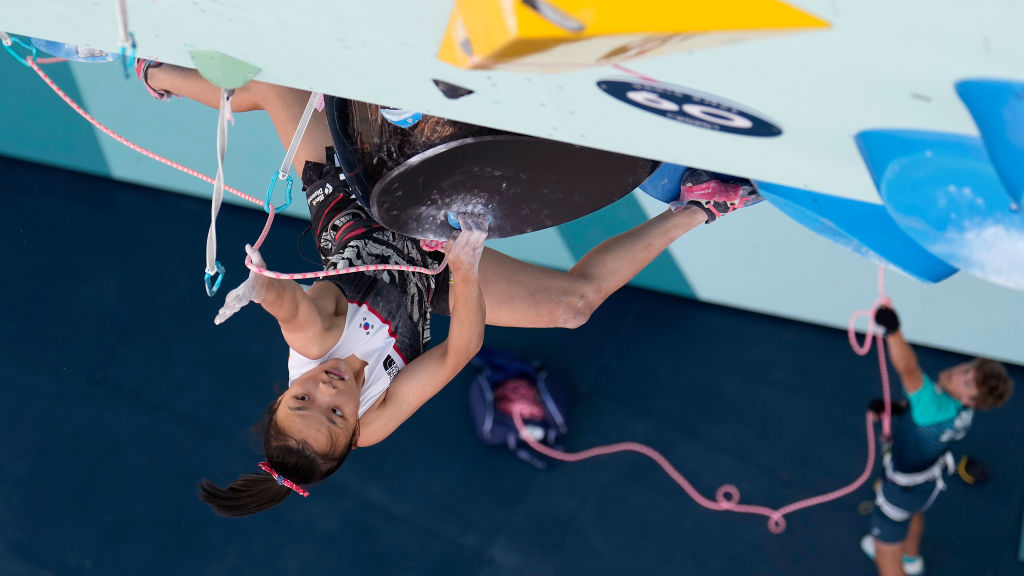"None of the climbers had a high level of experience": new reports details what went wrong in North Cascades climbing accident that killed 3
A new report issued by the US Forest Service outlines the key factors that may have contributed to the deadly fall

A new report has detailed some of the key factors that likely contributed to a climbing accident that killed three Seattle-area climbers in the North Cascades.
On May 10, Vishnu Irigireddy, 48, Tim Nguyen, 63, and Oleksander Martynenko, 36, were killed while descending from North Early Winters Spire after a "catastrophic rappel anchor failure" caused them to fall hundreds of feet. Anton Tselykh, 38, from Seattle, miraculously survived the incident despite traumatic injuries.
A new report published by the US Forest Service and based on interviews with Tselykh and evidence found at the scene provides an analysis of "this heartbreaking climbing accident" and identifies multiple factors that may have led to the fall.
The men began climbing at 6:10am from the SR20 harpin curve, climbing as two rope teams. The report finds that everyone on the team had climbing experience, but "none of the climbers had a high level of experience with this genre of mixed snow/ice/rock alpine climbing."
This lack of experience may have meant the team attempted the climb in "marginal conditions." The route is most often climbed in early spring or winter when freezing temperatures are present, but a local weather station shows temperatures in the area were well above freezing at between 40F and 45F (4.4C - 7C) for the duration of the climb, which the report states "can reduce the availability of sound snow and ice anchors. "
"They did carry equipment to build a v-thread ice anchor, suggesting they may have expected to find solid ice. In good ice conditions a v-thread is an adequately strong rappel anchor. Given the conditions on May 10th, it is unlikely that suitable ice for such an anchor would have been available, so ice conditions ultimately did not play a direct role in the fall."
Climbing as a larger team combined with relative inexperience may also have contributed to the men moving a slower pace, according to the report, causing them to turn around before reaching the final pitch despite climbing for 11 hours.
All the latest inspiration, tips and guides to help you plan your next Advnture!
Though overall, the team appeared to have been "reasonably equipped" for the expedition with technical ice tools includings crampons and helmets and a Garmin InReach device, the reports states that one climber did not have an adequate jacket for the dropping temperatures and another was wearing ski touring boots instead of mountaineering boots.

On their descent, the weather was deteriorating, sunset was approaching, and the men had been climbing for more than 12 hours. The report suggests that a "sense of urgency" may have interfered with decision-making capabilities, and the men descended as a single team of four instead of in two pairs as they had on their ascent. This meant that on the fourth rappel, they were all clipped into two slings, which were attached to a single piton – a metal spike – they found already driven into the rock.
"No additional rock anchors were available at the location of the piton, and the snow in that location was not suitable for a snow picket anchor," states the report, which also suggests the men, suffering from both physical and decision fatigue, simply deferred to the team leader and didn't question the use of a single anchor point.
"Most rappel anchors, either established or improvised, employ two or more anchor points to provide redundancy. Because rock quality, placement error, or weathering can contribute towards a weaker than intended anchor point, single point anchors are rarely trusted."
A few seconds after the team began to rappel, the piton anchor pulled out of the rock, causing all four climbers to fall between 100 - 200ft to a snow ramp before sliding an additional 400 - 500ft down a steep snow and rock slope, coming to rest just at an elevation of 6,148ft. First responders later found a "moderately rusted" piton clipped to the team’s ropes with a locking carabiner. The carabiner was unlocked, but it is not known if it came loose during the fall.
Tselykh says he regained consciousness after "multiple hours" to find the bodies of two of his teammates nearby.
"There are no solid indicators as to how Climber 4 survived the fall, as Climbers 1, 2, and 4 all fell from the same height and were attached to the piton similarly," says the USFS.
Despite suffering traumatic injuries, Tselykh self-evacuated in the dark and drove to Newhalem, WA where he reported the accident from a payphone.
The report concludes that the team may have been able to rig a longer rappel from the third anchor that would have allowed them to reach the snow ramp without using a fourth rappel anchor.
"This would have required passing the bend used to join the ropes, and both ropes would have needed to be left on the mountain."
Emergency responders from Okanogan County Search and Rescue, US Forest Service, and Winthrop Marshal’s Office responded to the incident and transported the fallen climbers from scene by helicopter.
Julia Clarke is a staff writer for Advnture.com and the author of the book Restorative Yoga for Beginners. She loves to explore mountains on foot, bike, skis and belay and then recover on the the yoga mat. Julia graduated with a degree in journalism in 2004 and spent eight years working as a radio presenter in Kansas City, Vermont, Boston and New York City before discovering the joys of the Rocky Mountains. She then detoured west to Colorado and enjoyed 11 years teaching yoga in Vail before returning to her hometown of Glasgow, Scotland in 2020 to focus on family and writing.

